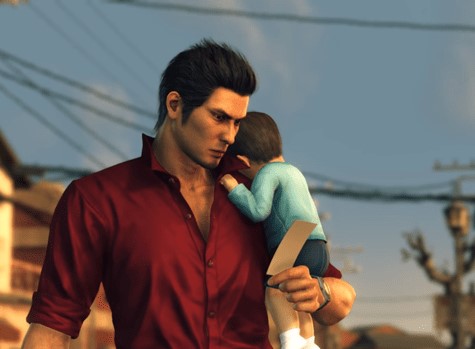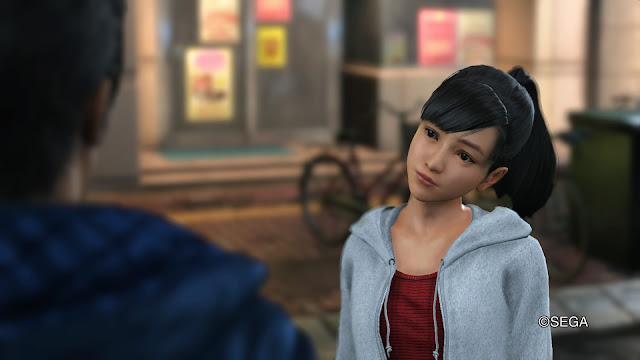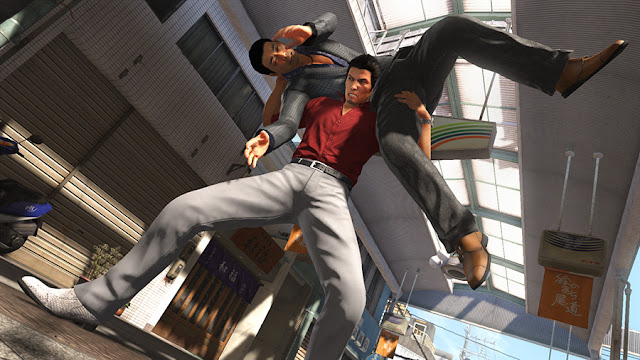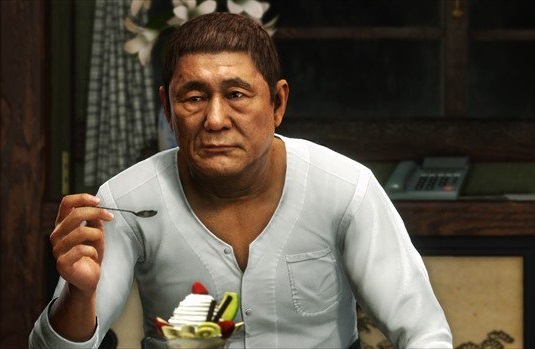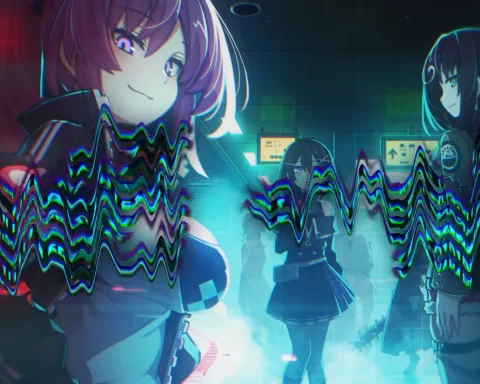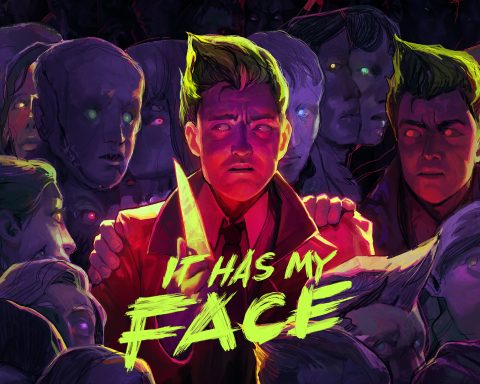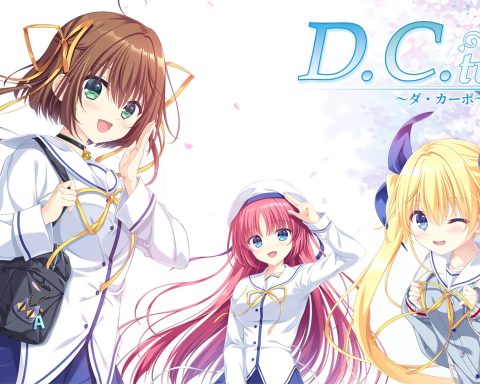Review by Matt S.
Yakuza games can be such a glorious mess at times. Each title in the series pulls together so many completely disparate elements that the end result is a weird, and often downright surreal, soup of gameplay mechanics, aesthetics, tone and themes. And yet the overriding fact is that Yakuza games manage to pull it off, and be surprisingly authentic, too. As someone who has spent a lot of time in Japan, it’s the authenticity in the way the game world is depicted that gives me a great yearning to go back every time I play one of the Yakuza games. And Yakuza 6 is the most perfect realisation of the series to date.
For many people, Yakuza 0, released last year, was an introduction to the series. That one was set back in the glorious 80’s, and was bustling with youthful energy and panache as characters that would become mainstays thereafter were establishing their place in the world. Yakuza 6 is set in the here and now. Kiryu, the series’ lead, is much older, and he’s one tired veteran yakuza. Having spent some time in prison, he’s released and come home to the orphanage on Okinawa that serves as a paradise away from the politics and violence of the yakuza world.
Kiryu gets there only to realise that his adopted daughter, Haruka, has made her way back to Kamurocho – a fictional part of Tokyo loosely based on real world Kabukicho – and the scene of so much of the drama and intrigue that Kiryu has had to navigate through over his career. Worse, she’s gone missing. In trying to track Haruka down, Kiryu discovers that she’s been the victim of some kind of hit-and-run attack and is now in a coma. Furthermore, she’s left behind a son that no one in Kiryu’s circles knew about. And so starts Kiryu’s quest to track down the father of the child, and work out the reason for the attack on Haruka. Unsurprisingly, he finds himself yet again drawn into the deadly web of yakuza politics.
Part of the reason that the Yakuza games are so fascinating is that the yakuza themselves are a fascinating part of Japanese culture. These games present a surprisingly realistic view of the yakuza, as highlighted in one of the most incredible pieces of games journalism ever, in which a journalist got actual yakuza to play Yakuza 3. Seriously, read it. “There are a lot of guys whom I feel like I know,” one real-world yakuza member says in that feature. “The dialogue is right, too. They sound like yakuza.”
In addition to being remarkably authentic about how they depict the yakuza themselves, what the games absolutely nail is the complex relationship that the yakuza have with the rest of Japanese society. They’re far more open, and far more tolerated both by citizens and the police, than the mobs in most other nations. This is because the yakuza have rules about involving “civilians” (innocents) in their intrigues, and generally do a good job in keeping the more dangerous (to civilians) mobsters from other syndicates out of Japan. Furthermore, they tend to chase off disorganised crime, and have even been known to leverage their resources and reach to contribute back to society in a positive manner. Following the nightmarish earthquakes and tsunamis that Japan frequently experiences, the Yakuza are often on the scene with aid, water, and other supplies before the government teams.
Make no mistake, the yakuza are not exactly good people, but as undergrounds go, the sense of honour and decorum that allows the rigid hierarchies to jostle for rank and position without everything descending into chaos makes for an immensely appealing background for a video game. And it makes the likes of Kiryu, as something of a nice-guy anti-hero, a rich, complex, and enjoyable character. Seven games we’ve been following his story now, and while he’s aging on screen, we’re not getting even slightly bored of him.
Kiryu’s role as a dad in Yakuza 6 is both surreal and amusing. It’s amusing to see just how out of his depth he is with his tiniest of challenges, and the game spares no opportunity to really play up the humour of the situation. One minute Kiryu will be playing games with the baby to try and calm him down while he desperately searches for some formula in a town where all the shops have shut at night. The next minute he’ll have left the baby at a bar to lay a slap-down on an uppity yakuza who has decided to cause trouble. These juxtapositions introduce a new dynamic to the yakuza series, and give us our best look at a paternal Kiryu. We always knew he had the paternal streak because of the way he cared for the orphanage in Okinawa, and his protectiveness of Haruka, but for the first time it’s a really dominant plot strand, and sitting over the top of an aging a weary Kiryu, we get a sense of a character that continues to evolve in an interesting and believable way; over the course of the series he’s become a study in how to execute perfect characterisation and development.
Kiryu isn’t the only character in Yakuza 6, of course, and the series continues its fine tradition of pulling both A-list actors in Japan and B-tier yakuza film specialists together to give the game a highly cinematic and authentic appearance. Yakuza 6 reaches as high into Japan’s talent pool as they come, getting the almighty Takeshi “Beat” Kitano to lend his voice and likeness to the game. His role is vintage Beat Takeshi, too. Fans of Japan’s huge and enduring yakuza genre will recognise a lot of the talent present in the game, and it’s hard to shake the impression that everyone involved in the project loved their time with it, too. Performances are over-the-top, but in a genuine, amusingly enthusiastic way, rather than being out-and-out ridiculous and slapstick. Every cut scene drips with conviction and verve. Yakuza 6 might not be the triple-A blockbuster that something like Horizon or Grand Theft Auto is (though in many cases the sheer authenticity does make it look more impressive), but the storytelling and delivery is as good as anything you will ever see in a video game.
Environments themselves are a character, too. Each city and location that forms a setting for part of the game has its own personality and tone. The main location of Kamurocho is a playground with endless activities and 24/7 restaurants, stores, and entertainment venues – just like Tokyo’s real-life night locations. But take a trip to a small country town and it’s almost eerie in how little there is to do. Some players might interpret that as dull by comparison, but having spent time in those small towns in the real Japan, I found the differing atmosphere and pace to be spot on.
Environments themselves are small, as has always been the case for the Yakuza series. And yet, while you might have a tiny fraction of the world to explore that you’d get in a GTA title, there’s no down time in Yakuza. You’re always walking past opportunities to do things, or to explore. There’s no car, as is standard in other open world games, because the space is small enough to save you the monotony of driving from one location to the next to trigger a mission. Indeed, if you want to simply run through all the story missions, Yakuza 6 itself won’t take so long to play through.
But of course you won’t do that, because you’re almost certain to be sidetracked dozens of times. Part of the reason is the well made minigames that cover off almost every activity you could get up to in a real city – including full recreations of classic arcade games. There’s even a fairly detailed management simulator in there, as you structure up a Yakuza family, fill leadership roles, and build their strength up. Another part of the reason will be the side quests, which you won’t find yourself completing because of the rewards they offer. Oh no. You’ll be playing those just to see how each can one-up the previous side quest for odd, even downright surreal humour. When I first started playing Yakuza 6 I was a bit concerned at first that it was taking itself too seriously, but as it turns out, those side quests just took a little while to warm up.
There’s a lot of commentary which cuts through the humour, however, making it all the more effective as storytelling. I don’t want to give these away, because they really should be experienced first hand, but one of the earliest examples is when a salesman convinces Kiryu to install an AI virtual assistant onto his smart phone. Soon after, however, he discovers that the AI is manipulating him, often into dangerous situations, in order to help other people that also have the AI installed on their phone – the AIs are collaborating with one another. Then, when Kiryu tries to have the AI deleted, the AI interprets that as an attempt to “kill” it, and then starts manipulating other people with the AI installed on their phones to try to prevent Kiryu from getting rid of the app.
This is one incredibly amusing sidequest to follow, but at the same time, it’s a narrative snippet that covers a very real concern that we have in the real world about the development and role of AI. Yakuza 6 is filled with sidequests like this. Highly amusing, but also intensely relevant and poignant to modern culture. Coming off the back of last year’s Yakuza 0, which was set in the 80s and more interested in taking an amused look back at that point in history, the modernity and relevance of Yakuza 6 is yet another way that this series has managed to remain fresh and keep people interested through subtle adjustments in the way it tells its stories.
Still other activities exist purely to remind you that, as yakuza, you’re playing in a very adult playground. All Yakuza games have featured an abundance of sex and sexuality, and spin minigames out of that. And, just like in the previous Yakuza game which would make use of real world AV actors, in Yakuza 6, there is again a connection between Japan’s real world sex industries and the Japan depicted in the game. This time around the main minigame is an online chat service, hosted by DMM (a real adult services company), that allows you to play through a basic QTE where you’re tasked with typing the right phrase into a chat window. Do it well enough and you’ll “progress a conversation” and watch pre-rendered video of real chat girls from the DMM service. Keep doing this well enough and eventually convincing them to strip down to their underwear and perform sexually provocative actions.
These minigames are presented in a satirical enough way that they come across as being on the right side of subversive, but the use of real women has always seemed a bit odd to me, to the point of breaking with immersion. The Yakuza games do such a good job of rendering beautiful women in-engine for the obligatory hostess club scenes (and recreating the faces of real-world actors into the game in general) that I don’t understand why SEGA would decide to use footage of real women for these particular adult minigames. All it does is draw attention to the fact that the rest of the game is a digital render. But that’s a minor complaint about such a minor part of the game – one that can be easily ignored if strikes you as being tonally odd.
Truth be told, though, one of my favourite things to do in the entire series – and it’s no different in Yakuza 6 – is simply to explore the world. Visiting restaurants to discover what menus they offer (with the food depicted so photo-real that my mouth will often water), wandering around the stores, or just looking for little alleyways to hunt for little treasures, the ability to simply explore for the sake of exploring has always been a major part of the Yakuza experience to me. The world is designed so well and in such detail that I never feel that simply exploring is wasting time. This time around you’ve got access to a camera on Kiryu’s smart phone that helps as you play virtual tourist. It’s not a great feature, since it’s too hard to adjust angles and the like (for example in real life I almost always take my photos from a kneeling position, but here it’s standing photos only), but it’s yet another tiny inclusion that, in the overall tapestry of what Yakuza offers, genuinely allows for a game that people can play on their own terms, however they might like.
In all of this it’s easy to forget that Yakuza 6 is a game that’s heavy on the combat, too. The combat system itself is a pacey, brawler-style thing, which starts out simple enough, but as Kiryu earns experience, that range of moves will fill out substantially. Meanwhile, of course, enemies get tougher in kind. As with all previous Yakuza games, the violence is hard hitting and surprisingly extreme at times, with plenty of blood and hits that would surely leave many broken bones, and all of that fits with the underground theme of the narrative. Admittedly I don’t really come to a Yakuza game for the combat, but Yakuza 6 does things right in reducing the frequency in which enemies will pop up at Kiryu as he wanders around the street, and makes it easier to escape these battles before they start, so I’m quite happy with the balance that’s been struck in this one overall.
If there’s any justice in the world Yakuza 6 would sell millions of copies. It’s smart, sharp, often surreal, and always hugely entertaining. The game maintains the series’ penchant for reproducing the experience of being in a Japanese city to exacting details, and then overlays a brilliant, labyrinthine, wildly funny B-grade yakuza drama over the top. It’s the kind of game you just “live” in, and the perfect example of open world game design done right.
– Matt S.
Editor-in-Chief
Find me on Twitter: @digitallydownld
 |
| Please Support Me On Patreon!
|

